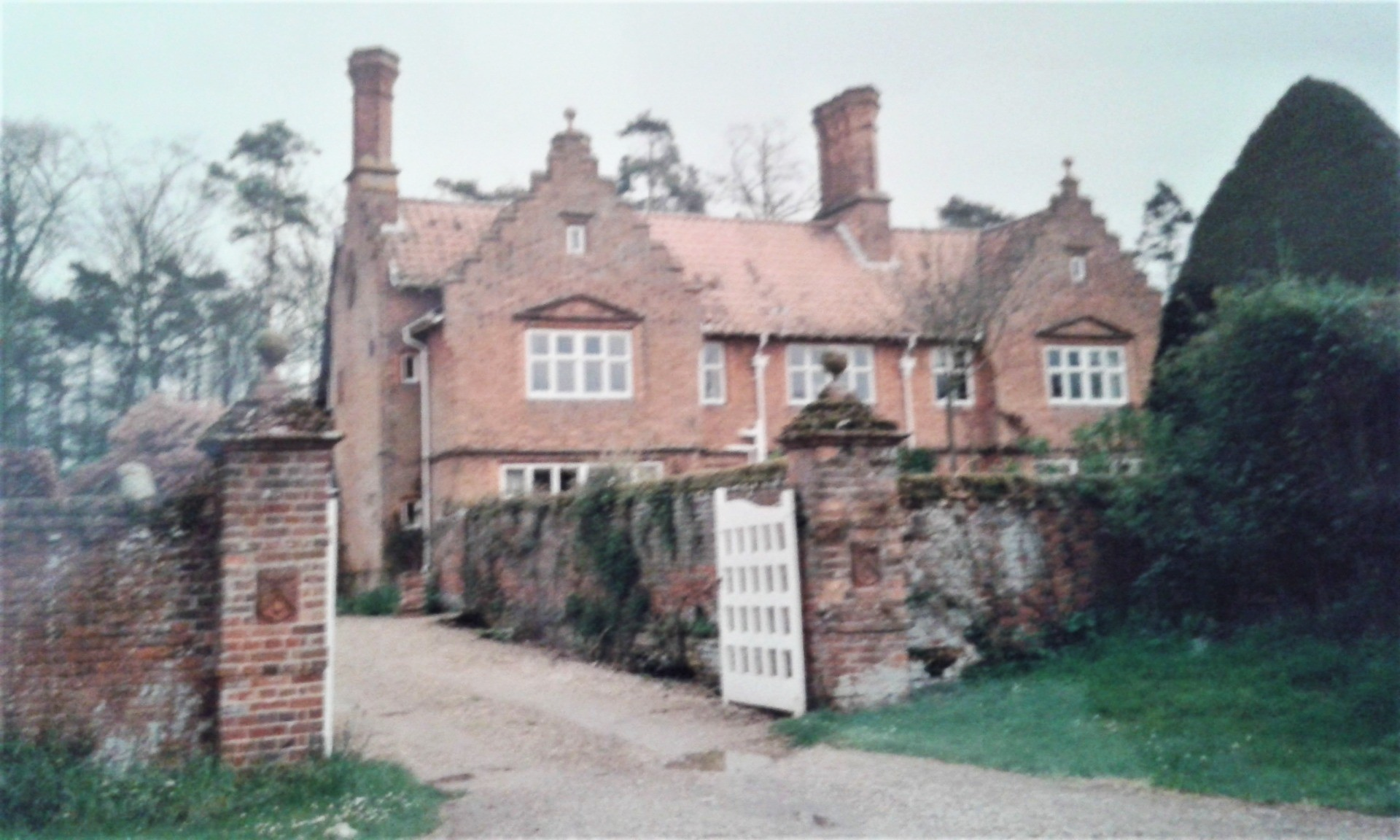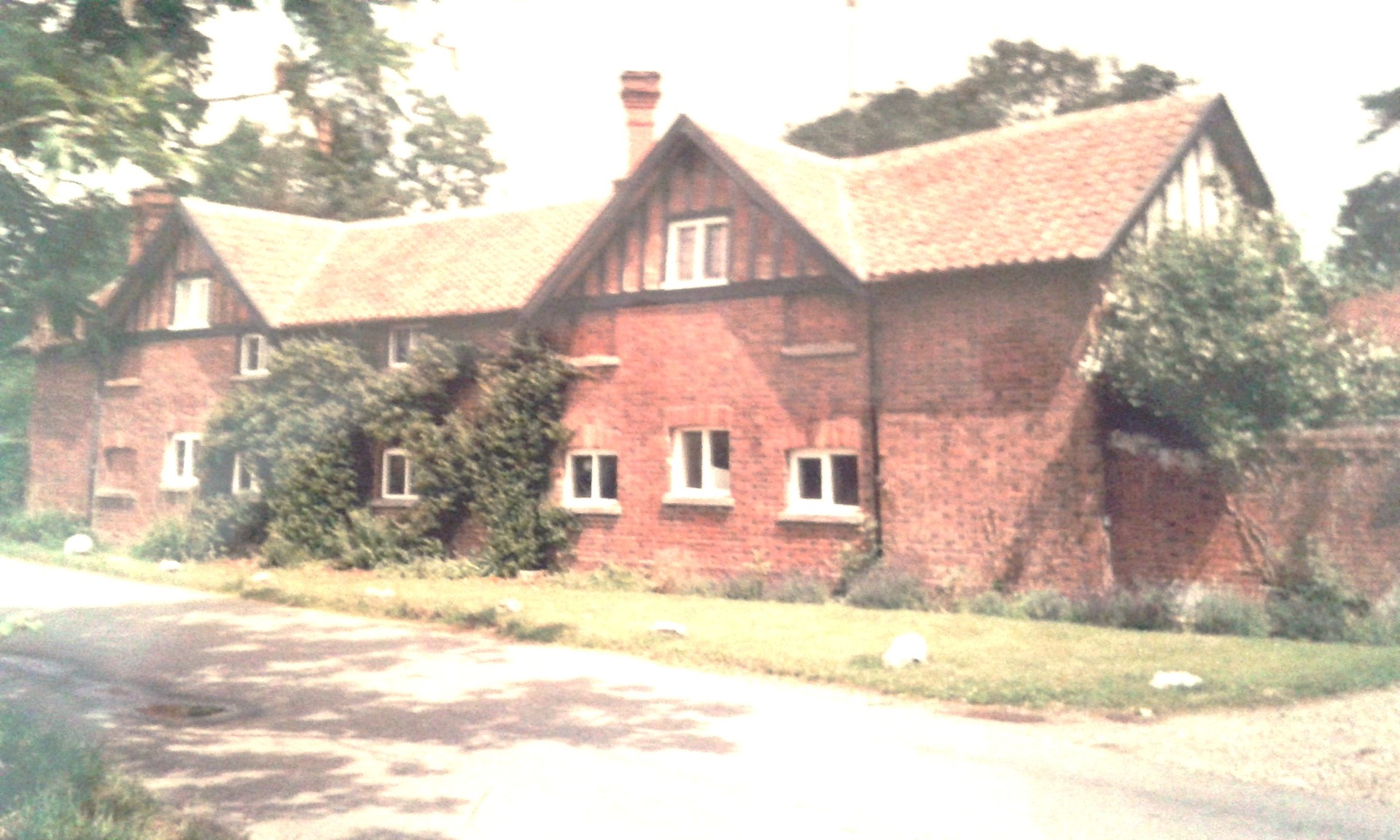Tasburgh Grange, Low Road

Until the beginning of the 20th
century Tasburgh Grange was known as Malthouse Farm and its earlier history as
a farm is dealt with under the Farms and Farming section. In 1903 Malthouse
Farm together with 30 acres was offered for sale by auction on 25th
July at the Royal Hotel in Norwich on behalf of the tenants for life under the
Will of the late Stephen Leeds. The property was described as a substantially
built and pleasantly situated farmhouse with 3 sitting rooms, kitchen,
scullery, dairy, cellars, 4 bedrooms, 2 attics and enclosed courtyard with coal
and wood sheds and a pump with a good supply of water. The agricultural
buildings, described as ample and brick and tiled, included a 3 horse stable,
cart house, large granary, a range of buildings formerly a Malthouse now used
as a cow house, calves' boxes, 2 loose boxes with a hay loft above, implement
sheds and also a 3 bay cart lodge and piggeries.
The purchaser was Philip Berney Ficklin of Tasburgh Hall. At the time of the purchase, part of the garden and most of the water meadows opposite were owned by the village Poors' Lands Charity and Fuel Allotment Charity, but in 1905 he obtained two Orders from the Ministry of Agriculture authorising the acquisition of both areas in exchange for other land in the village, thereby consolidating his land holdings and protecting the views from The Grange. By the time the second edition of the large scale OS Map for Tasburgh was published in 1906, substantial changes had been made to the property. The most obvious was the addition of the brick built series of rooms with crow stepped gable "wings" fronting the road and masking the old farmhouse behind. It is not clear whether the property now known as the Malthouse was indeed the site of the original malt house, and if so how much, if any of the original roadside building remains within the current structure, but it is clear that substantial work was carried out on it at the same time as the work on the main house, as evidenced by the matching brickwork, chimneys and pediment over the now partly blocked drive side window. As part of the work, a long building or barn which stood opposite the front door of the main house was also demolished.
Whether the alterations were made by Mr Berney Ficklin however seems doubtful for a number of reasons. He had been granted his own coat of arms which he displayed on all the buildings he owned in the village but the arms on the gable above the front door and on the gate pillars are not his personal arms but the generic arms of the Ficklin family. There is also no evidence that he ever lived in the house, whereas there is ample evidence of his continued occupation of Tasburgh Hall until he died in 1917. Although one of his sons was later to live in the property after his father's death, he would still have been a boy in 1906, and both of Mr Berney Ficklin's parents had already died by then, so who would have been the intended occupant and beneficiary of all that expenditure? Lastly, renovation work a century later uncovered evidence of money saving in some of the building work, and Mr Berney Ficklin was certainly not short of money.
What is known for sure is that by 1908 the house was occupied by Walter Roach because Kelly's Norfolk Directory that year records the house as his address, and he remained there until his death in 1921. Before he retired to Norfolk, Walter Roche had a career in London working as Assistant Secretary of the General Post Office. He and his brother Mark, who lived with him, were also sculptors and artists, and the large north facing window in The Malthouse would have provided ideal lighting for a studio so there is a distinct possibility that after buying the property, Philip Berney Ficklin granted a lease of the house to Walter Roche who carried out the alterations for his own benefit, and knowing that the property was only on a lease, perhaps he wouldn't have been quite so concerned about the standard of the work.
After Walter's death, his brother Mark continued to live at The Grange for another year or so, but by 1924 Philip's second son, Alexander Tennant Mackintosh Berney Ficklin, had taken up residence. Although Tasburgh Hall had by that time been sold following his father's death in 1917, it seems Alexander Berney Ficklin had inherited or bought the remainder of the Tasburgh Hall estate, including The Grange, following his father's death. As Alexander was not entitled to use his father's coat of arms it seems probable that it was he who added the generic Ficklin arms to the property and was responsible for installing the stone fire surrounds and the ornate panelled door which matches another one in Tasburgh Hall. He remained living at The Grange until 1948 when the property was put up for sale by auction in three lots in May that year by Francis Hornor & Son of Norwich and the London agents Knight Frank and Rutley. Lot 1 comprised the main house and buildings with nearly six acres of grounds and included a gardener's cottage (now part of The Malthouse) and another pair of let cottages on Low Road. Lot 2 was Grange Farm of 64 acres, the house for which is now Forge Cottage, and its barns. As well as the water meadows, the Grange Farm land included the whole of the big central field now belonging to the owners of Hall Farm, which itself was the subject of Lot 3 comprising 153 acres plus house and buildings let to Bernard Cross. During Alexander Berney Ficklin's time the fields opposite Forge Cottage and The Old Horseshoes were the site of a poultry farm with a dozen or more large chicken sheds run by Dennis Robinson. He was succeeded by William Ebbs as the tenant of Grange Farm, and during WW2 the water meadows were ploughed up to grow crops in aid of the war effort.
At the auction, Lots 1 and 2 were bought by a builder, Mr Gibbons, who lived for a while at Tasburgh Grange. He sold the pair of let cottages, now known as Bramble Cottage and Greenmore Cottage, and then in 1956 he sold the house together with the remainder of Lots 1 and 2 to Julian Crawshay and his wife Ann, who sold off the majority of the farmland but keeping the water meadows. Mr Crawshay was the managing director of the Norwich brewers Youngs, Crawshay and Youngs, whose many pubs included The Countryman, then called The Bird in Hand. After a merger and take over, the Youngs Crawshay pubs came to be owned by Watney Mann, which itself then became part of the publicly quoted Grand Metropolitan Group, of which Mr Crawshay became a main board director. His mother, Betty Crawshay, lived in Forge Cottage, but after she died in 1972 that cottage was sold, as were the adjoining barns which were converted to form Grange Meadow. In due course the gardener's cottage and former studio were also sold and together became the current Malthouse dwelling.

Mr Crawshay died in 2009 and his widow, Ann, moved to Upper Tasburgh, living next door to Longwood House off Church Road, with The Grange being acquired by their son, Willie, and his wife, Claire. Before moving in, they employed the building firm of Harveys of Wreningham to carry out a major programme of restoration and internal reorganisation, which took nearly two years to complete.